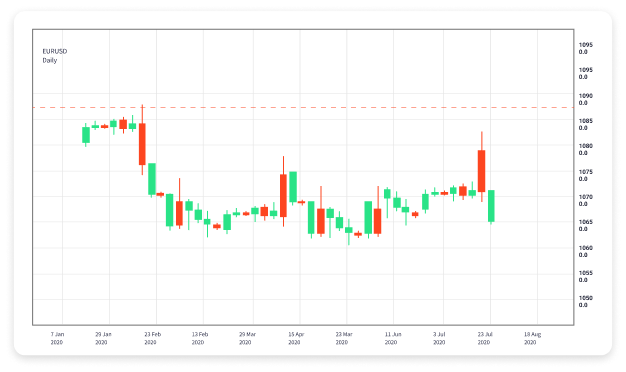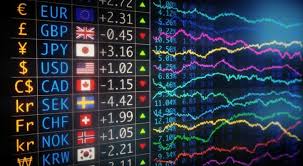
Mastering Forex Trading Strategies for Successful Currency Trading
In the fast-paced world of forex trading, the right strategies can make all the difference between success and failure. Whether you are a beginner or an experienced trader, understanding various trading strategies is crucial for achieving consistent profitability in the forex market. In this article, we will explore effective forex trading strategies that can help you navigate the complexities of currency trading. For more insights and resources, visit forex trading strategies https://ex-zar.com/.
Understanding Forex Trading
Forex trading, or foreign exchange trading, involves buying and selling currencies with the aim of making a profit. The forex market is the largest financial market in the world, with daily trading volumes exceeding $6 trillion. Because of its size and the continuous availability of trading opportunities, many traders are attracted to forex trading. However, success in this market requires a solid understanding of various trading strategies and market analysis techniques.
Types of Forex Trading Strategies
There are several types of forex trading strategies that traders can employ based on their goals, risk tolerance, and market analysis methods. Below are some of the most effective strategies:
1. Scalping
Scalping is a high-frequency trading strategy that involves making small profits from minimal price changes. Scalpers typically hold trades for mere seconds or minutes, executing many trades throughout the day to accumulate profits. This strategy requires excellent timing, quick decision-making, and a solid understanding of market dynamics and technical indicators.
2. Day Trading
Day trading involves opening and closing positions within the same trading day. Traders who follow this strategy typically focus on shorter time frames, using intraday charts to analyze currency movements. Day traders aim to capitalize on price fluctuations that occur throughout the day, avoiding overnight risks. Technical analysis, chart patterns, and indicators are crucial tools for day traders.
3. Swing Trading
Swing trading is a medium-term trading strategy where traders hold positions for several days to weeks. This strategy aims to capture price swings in the market, allowing traders to take advantage of larger movements. Swing traders often use a combination of technical and fundamental analysis to identify potential entry and exit points, focusing on trends and market sentiment.
4. Position Trading
Position trading is a long-term strategy where traders hold positions for weeks, months, or even years. This approach is based on fundamental analysis, as position traders analyze economic indicators, geopolitical events, and macroeconomic trends. Position trading requires a deep understanding of the factors that drive currency values and the patience to endure market fluctuations.
Using Technical Analysis
Technical analysis is a key component of many forex trading strategies. It involves analyzing historical price data and identifying patterns to forecast future price movements. Traders use various tools and indicators, including:
1. Trend Lines
Trend lines help traders identify the direction of the market. By connecting significant price points, traders can determine whether the market is in an uptrend, downtrend, or sideways movement.

2. Moving Averages
Moving averages smooth out price data to identify trends more clearly. Traders often use the simple moving average (SMA) or the exponential moving average (EMA) to gauge market direction and potential reversal points.
3. Relative Strength Index (RSI)
The RSI is a momentum indicator that measures the speed and change of price movements. It helps traders identify overbought or oversold conditions, aiding in decision-making for potential trade entries and exits.
Fundamental Analysis in Forex Trading
Fundamental analysis involves evaluating economic indicators, news events, and geopolitical factors that can influence currency values. Successful forex traders understand how economic releases such as GDP reports, employment figures, and interest rate decisions can affect the market. This analysis can provide valuable insights into potential currency movements and help inform trading decisions.
Risk Management Strategies
One of the most critical aspects of forex trading is effective risk management. No trading strategy is foolproof, and losses are inevitable. Implementing proper risk management techniques can help protect your trading capital and ensure long-term success. Some key risk management strategies include:
1. Setting Stop Losses
Stop-loss orders are essential for limiting losses on trades. Traders should determine their acceptable risk levels and set stop-loss orders accordingly, ensuring that losses are kept within manageable limits.
2. Position Sizing
Determining the correct position size based on account size and risk tolerance is crucial. Traders should avoid risking more than a small percentage of their trading capital on a single trade to safeguard against significant losses.
3. Diversification
Diversifying your trading portfolio by trading multiple currency pairs can help reduce risk. This strategy aims to balance potential losses with gains across different trades.
Developing a Trading Plan
A well-defined trading plan is essential for consistent success in forex trading. This plan should outline your trading goals, entry and exit strategies, risk management techniques, and criteria for evaluating performance. By adhering to a trading plan, traders can maintain discipline and avoid emotional decision-making that can lead to losses.
Conclusion
Mastering forex trading strategies requires dedication and continuous learning. By exploring different approaches such as scalping, day trading, swing trading, and position trading, traders can find the strategies that best suit their individual preferences and goals. Implementing effective technical and fundamental analysis, coupled with robust risk management techniques, can enhance trading performance and lead to long-term success. Remember, education and practice are key components in becoming a proficient forex trader.